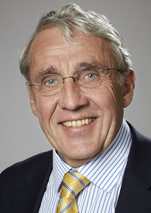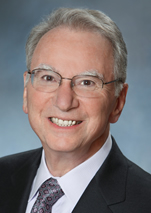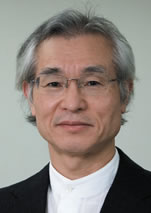2014 Recipients of C&C Prize
Group B

Dr. Jan Uddenfeldt Former CTO, Ericsson and Sony Mobile Communications |

Dr. Irwin Mark Jacobs Founding Chairman and CEO Emeritus, Qualcomm |

Prof. Fumiyuki Adachi Professor, Tohoku University |
Citation
For Outstanding Leadership and Contributions Promoting the Development and Commercialization of Digital Mobile Communications Systems
Achievement
First-generation (1G) mobile communications services started around 1980. They used analog technology and their major focus was voice communications services for car phones. Aiming at reducing system costs as well as introducing new Internet-related services such as messaging services, second-generation (2G) digital systems appeared in the 1990s and spread widely to the general public. Third-generation (3G) digital systems, which were commercialized in the 2000s, enabled high-speed and advanced data communications services, such as multimedia communications. As a result of these advances in mobile communications technologies and services as well as an increase in the need for communications services in emerging countries, mobile communications services have been explosively growing and are currently an indispensable part of the social infrastructure around the world.
Dr. Uddenfeldt, Dr. Jacobs, and Prof. Adachi played very important roles in developing and standardizing the mobile communications system technologies. That established the foundation for the prosperity of today’s digital mobile communications services. The three recipients have therefore had outstanding achievements and shown remarkable leadership, especially as representatives of the other contributors in each of their regions (Europe, North America, and Asia, respectively). And they did this for each generation of the technology. Their leadership and contributions, however, are not limited to each region, but are global.
Dr. Jan Uddenfeldt was a leading contributor to the development and standardization of 2G, 3G, and today’s 4G digital mobile communications systems. In particular, he was a major contributor and leader in developing and standardizing the 2G global standard system called GSM. He and his colleagues helped establish high-speed data transmission technology for the time division multiple access (TDMA) method using adaptive equalization technology, even though it had been difficult in the conventional mobile radio communications environment for a long time. In cooperation with numerous engineers, this method became the world's first digital mobile communications system.
He also played a very important role in introducing many other innovations into GSM such as mobile-assisted hand-over (MAHO) and frequency hopping (FH). These innovative technologies significantly increased capacity, reduced the cost of base stations and pioneered the way for the microcell system. Moreover, lots of system technology was achieved with GSM, which is the foundation of today’s mobile communications infrastructure. Dr. Uddenfeldt also contributed heavily to the global standardization and development of the 3G mobile communications system. He proposed the use of wideband code division multiple access (W-CDMA) for 3G way back in the early 1990s in a European research program. He also introduced the fundamental 3G architecture in which W-CDMA is used as an add-on to the GSM core network and the use of dual-mode GSM/WCDMA handsets. This formed the basis for the global 3G standard and became very successful because it greatly reduced the cost of building the networks.
Dr. Irwin Mark Jacobs led the development, standardization, and commercialization of CDMA technology for digital mobile communications systems. CDMA, first introduced as a 2G cellular standard, was chosen as the technology that is fundamental to all 3G cellular networks, and now supports approximately three billion subscribers. CDMA provides highly efficient use of the radio spectrum for mobile voice and broadband data communications. To do so, Dr. Jacobs and his colleagues introduced a range of innovative technologies, including multi-level power control, soft and softer handoffs, common pilots, and the rake receiver to provide multipath signal enhancement. He also directed the development of integrated circuits that support these capabilities and their extension to system-on-a-chip integrated circuits that now enable our smart mobile devices. CDMA technology was standardized in 1993 as IS-95 (cdmaOne), and then, with further enhancements especially for packet data, was commercialized in the first 2.5-generation system. These enhancements then evolved to the widely-used 3G mobile broadband technologies known as evolution-data optimized (EVDO) and high-speed packet access (HSPA).
Prof. Fumiyuki Adachi played a leading role in the research and development of the W-CDMA technology that is used now in 3G systems. From the very beginning of the research and development of 3G radio access technology, he strongly advocated that W-CDMA technology could provide flexible broadband multimedia communications and that 3G systems should be asynchronous to make system deployment flexible. He thus greatly influenced the development of W-CDMA technology with his strong leadership.
Prof. Adachi and his colleagues significantly advanced the CDMA technology and contributed to the creation of broadband mobile multimedia services. In addition to his research on various radio transmission techniques such as turbo-coding and interference cancellation, he invented the spreading code for the orthogonal variable spreading factor (OVSF) and developed the pilot based coherent rake receiver and the fast cell search algorithm essential for asynchronous systems. These inventions contributed to successfully adopting W-CDMA technology as the standard for 3G mobile communications systems that enable flexible system deployment and support various high-speed multimedia services.
Today, with the spread of smartphones and tablets, digital mobile communications systems have become important and irreplaceable infrastructure that provide Internet services and social services, including various applications in health management, medical, and financial areas. These communications systems are evolving toward fourth-generation (4G) systems, which provide much broader multimedia services. In addition, the study of the fifth generation (5G) has started. However, the fundamental mobile communications system technologies established by these three recipients are outstanding and contribute to the advancement of not only the mobile communications systems but also all information communications systems, making their achievements quite worthy of the C&C Prize.
